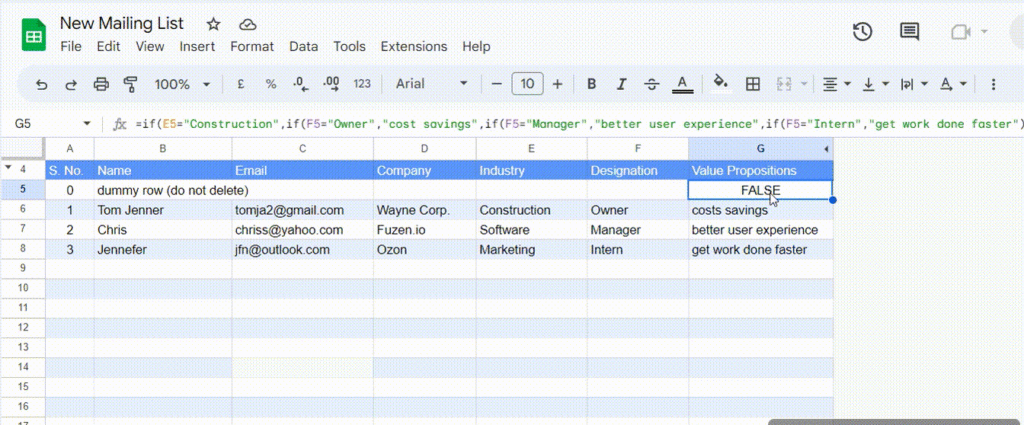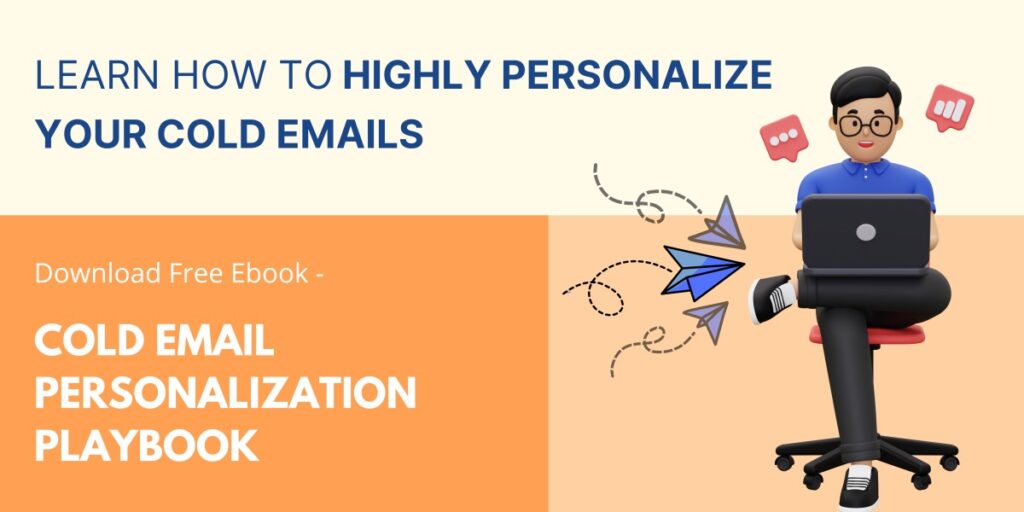In today’s digital age, effective communication is vital for businesses to connect with their target audience and achieve their marketing goals. One powerful method to engage prospects and customers is through cold email campaigns.
However, sending generic and impersonal emails can lead to low open rates and poor conversions. That’s where personalization comes in.
But achieving effective personalization in cold emails is not possible without segmentation.
In fact, a statistic from NotifyVisitors shows that segmented campaigns experienced a 14.31% increase in open rates and recorded a 101% boost in click-through rates in comparison to non-segmented campaigns.
Segmentation and personalization both go hand-in-hand.
Though most marketers understand its importance, very few implement it.
Wondering why?
Segmentation is a big deal in marketing. There are multiple ways to do it and not many marketers actually get it right. Even the ones who do give it a shot often make mistakes ultimately giving up.
Hence, in this comprehensive guide, we will walk you through a systematic way of segmenting your email list and utilizing those segments to personalize your emails.
Segment Your Email List
Segmenting your email list effectively requires careful planning and consideration. Here’s a step-by-step approach to help you segment your email list for optimal personalization:
1. Define Your Campaign Goals
Defining your goal is key because it helps you figure out the data you need. Once you know what you’re aiming for, you can gather the right information to create personalized emails that drive the conversions you want. So, when setting your goals, it’s important to be clear about what you want to achieve.
Ask yourself, what do you want your email campaign to do?
- Do you want to sell more of a specific product?
- Are you trying to get more people to download your app?
- Maybe you want users to upgrade to a higher tier of service.
- Or perhaps your goal is to get more people to register for an event.
Once you know proceed to the second step.
2. Collect Relevant Data
Think about gathering information from various sources. You want to know your subscribers inside out. So, get insights on their demographics, their past purchases, what they browse online, and anything else that can help you understand them better.
Remember, the more data you collect, the better you can divide your email list into meaningful segments. And that’s when the magic happens. You’ll be able to send targeted emails that feel personal and relevant, even if it’s a cold outreach.
3. Identify Relevant Data Points
Analyze the collected data and identify patterns or characteristics that can be used for segmentation. For example, you may segment based on demographic factors such as age, location, or industry. You can also segment based on specific actions taken, such as past purchases or engagement with previous emails.
4. Use Conditional Logic
Once you have defined your segments, it’s time to apply conditional logic to assign subscribers to the appropriate segments. Many email marketing automation platforms provide features that allow you to set up rules based on specific criteria. This ensures that subscribers are added to the relevant segment automatically.
You can also do this in your Excel sheet.
For example, let’s say you have three columns in your Excel sheet: Column A, Column B, and Column C. You want to apply a condition such that if the value in Column A is “X” and the value in Column B is “Y”, then the value in Column C should be “Z”.
Then, enter the following formula in the selected cell:
=IF(AND(A2=”X”, B2=”Y”), “Z”, “”)
This formula uses the AND function to check if both conditions are met: the value in Column A is “X” and the value in Column B is “Y”. If both conditions are true, it assigns “Z” to the cell in Column C; otherwise, it leaves the cell empty.

Personalize Your Emails
Now that you have segmented your email list, it’s time to personalize your emails to deliver highly targeted and relevant content. Here are some strategies for effective personalization:
Craft personalized subject lines:
Subject lines are the first thing recipients see in their inboxes. So it’s crucial to make them compelling and personalized. Instead of generic subject lines, create ones that grab their attention and speak directly to their segment.
Consider using their name, mentioning specific interests or pain points relevant to their segment, or offering something exclusive to them.
A personalized subject line increases the chances of your email being opened and read.
Customize the email content:
When it comes to the body of your email, go beyond a one-size-fits-all approach. Take the time to understand each segment’s pain points, interests, and needs. Then, tailor the content of your email to address these specific aspects.
Provide valuable information, tips, or solutions that resonate with their characteristics.
For example, if you’re targeting small business owners, focus on how your product or service can help them save time or increase productivity. By customizing the content, you demonstrate that you understand their unique challenges and can offer relevant solutions.
Highlight benefits or features:
Each segment of your audience may have different priorities and preferences. Personalize your email content by highlighting the benefits or features of your product or service that are most likely to appeal to each segment.
For instance, if you’re targeting a segment interested in eco-friendly products, emphasize the sustainability aspect of your offerings. By addressing their specific interests, you show that you value their individual preferences and increase the chances of engagement and conversion.
Automate
Make use of Dynamic content and merge tags. They allow you to dynamically insert personalized information into your emails.
Leverage these tools to add a personal touch to your email content. You can include the recipient’s name, location, recent purchase history, or any other relevant data you have collected.
By using merge tags effectively, you create a sense of individualized communication, making your recipients feel acknowledged and valued.
A cold email automation tool like SafeMailer can help you here. With Safemailer, you can effectively streamline segmentation and personalization in your cold email campaigns.
It enables you to personalize your emails by easily inserting segment values using the hashtag syntax. For instance, you can insert the #Name# hashtag in place of the recipient’s name. This ensures that each email feels personalized and tailored to the individual recipient.
Additionally, the spreadsheet-based mailing list feature with conditional logic optimization empowers you to send targeted emails to different recipient groups.

Conclusion
Segmentation and personalization are powerful strategies to boost the success of your cold email campaigns.
By implementing these strategies, you can transform generic and impersonal emails into highly targeted and relevant messages that resonate with your recipients.
So, embrace the power of segmentation and personalization to unlock the full potential of your cold email efforts and achieve your marketing goals with greater success.

Leave a Reply